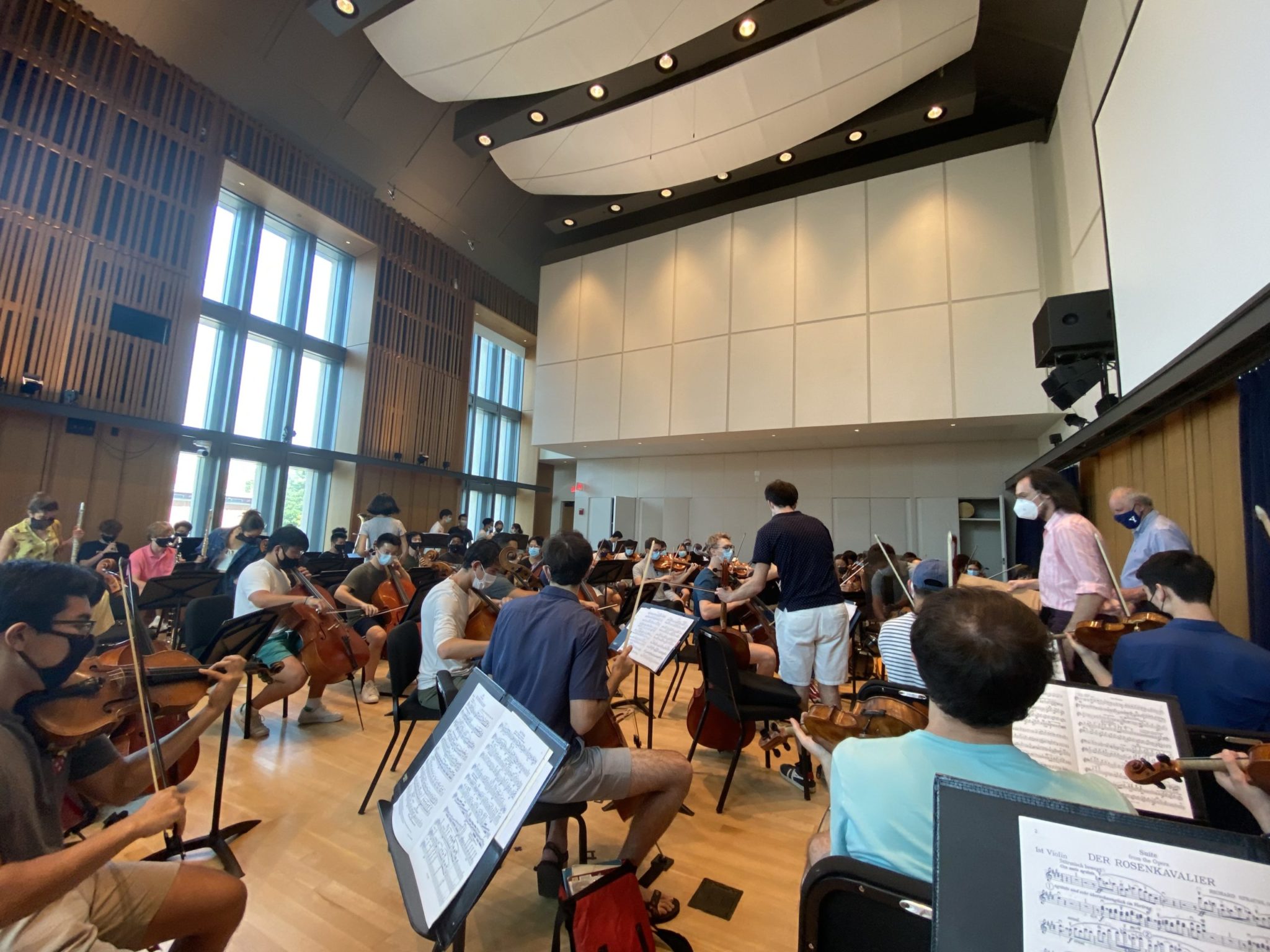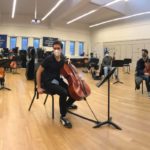Yale Symphony resumes full orchestra rehearsals
After a year of unconventional, strings-only rehearsals the Yale Symphony Orchestra has finally returned to normal conditions — save for a few restrictions.

Courtesy of Nicholas Cerny
An orchestra sits together for the first time in over a year. All students are masked — even winds and brass players have peculiar face coverings closing around the head joints of their instruments.
This is the current experience for musicians in the Yale Symphony Orchestra. After a year of Zoom practices followed by capped rehearsals, the YSO is finally returning to near-normal conditions.
The YSO began full orchestra in-person rehearsals on Sept. 8. In contrast to other campus organizations, the organization was able to hold in-person rehearsals during the Spring 2021 semester, but only for string players living on campus. Now the entire orchestra is playing together in Hendrie Hall.
“I think that everybody is so delighted to be back together again,” YSO conductor William Boughton said. “For musicians, the last 18 months have been so difficult. Trying to make music on Zoom, trying to speak with friends through music has been impossible on Zoom. So to be back together is the most wonderful gift. And I think that we’re all prepared to suffer a bit through wearing masks just so that we can be in person.”
Yale’s masking requirements had to be factored into rehearsal plans. Last year, wind and brass musicians were not permitted to rehearse in person due to their inability to play without masks, which could lead to increased spread of aerosols. This year, the YSO received special permission from the University for fully vaccinated students to participate in the 86-member orchestra — an exception to the Yale College Arts cap of 20 individuals for rehearsal and performance.
Boughton added that Yale Concert Band Operations and Productions manager Stephanie Hubbard and YSO Managing Director Brian Robinson discovered and sourced special instrument-specific masks and bell covers — pieces of cloth that cover the opening where sound and air come out of wind and brass instruments — designed for wind and brass players before the start of the academic year. This allows all players to perform together while fully masked.
Boughton noted that these unique masks and bell covers require wind and brass musicians to change their playing techniques. Additionally, musicians typically put their instruments down to turn pages of sheet music then pick them up again to start playing. With these masks, they now keep one hand on the instrument while turning the page with the other hand.
“What we haven’t discovered yet is what the stamina is going to be like during a full-length concert,” Boughton said. “It’s not like breathing normally.”
YSO trombonist and tubist Leonardo Starck von Mutius ’24 said that while masks were “a bit awkward” at first, the musicians quickly adjusted. He described them as “an ingenious solution,” and said they are user-friendly.
This year, YSO’s operations were also impacted by capacity restrictions on the number of students who could fit in its rehearsal room and a high number of applications from the large incoming class of first years, which made YSO auditions remarkably competitive this year, Weiss said. Of 172 applicants, only 86 were accepted.
“The students who did make it were all, I have to say, quite good,” said YSO president and flutist Supriya Weiss ’24. “Having heard everyone a little bit, I’m really excited to see what we’re going to sound like come performance time since everyone is super serious, super committed and super enthusiastic about being here.”
Weiss said the orchestra is allowed to perform in person this semester, but is unsure whether they can invite a live audience. Even if live audiences can attend performances, Boughton said they will only include Yale-affiliated individuals, not the general public. Regardless, the YSO plans to livestream their performances.
Boughton said this season’s repertoire will follow YSO’s programming philosophy, which focuses on music from the Western canon, American heritage and American contemporary music. The latter two categories refer to music by Americans from past and present times. The first concert’s repertoire will feature two pieces from the American contemporary category — Valerie Coleman and Omar Thomas, neither of whom the orchestra has programmed before — as well as two pieces from the Western canon: Rachmaninoff’s Piano Concerto No. 2 and Richard Strauss’ Der Rosenkavalier Suite.
Despite the restrictions this semester, Boughton, Berger, Starck and Weiss all said they were very grateful for the opportunity to play together once again.
“For me and many other musicians, part of what makes us love music so much is about the collaborative experience,” Weiss said. “Music is about communication between players, between player and audience. When you’re alone all the time, there’s an entire dimension of your playing that’s missing.”









